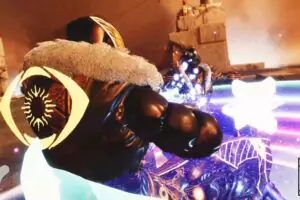It’s almost a bit unbelievable that a title that has been out as long as Counter-Strike could possibly experience yet another resurgence in popularity, but that’s exactly what continues to happen for Valve. Counter-Strike has been out for two decades, and the latest iteration, Counter-Strike: Global Offensive, was launched in 2012. This is unprecedented, an eight-year-old game having more players eight years after launch than it did on launch or any other time through its lifespan.
Many developers and publishers alike must be looking at how Valve has managed to pull this off, and the answer is likely multipronged facets that culminate in a singular massive force.
First, Counter-Strike: Global Offensive is arguably the singular epitome of competitive FPS, and other titles can’t hold a candle to the franchise in terms of competition. There is very little in terms of gimmicks; there are no abilities or choosing various characters that excel in different areas. The entire series is based on how well the player can perform, and nothing gets in the way of that (before the recent patch that allowed character skins, but we’ll get to that).
Counter-Strike is a game of murderous chess, with players preparing themselves to counter enemy positioning, feinting towards areas, and maximizing individual competence with weaponry all play a hand in what culminates in a crescendo of violence, every two minutes. Using utility, such as flashbangs to temporarily blind the enemy, or smoke to conceal movements and bait enemies, is standard fare within the title and has been for decades.
Valve hasn’t been content to simply sit on their laurels and experience players and critics alike fawn over their creation that originally stemmed as a Half-Life mod. They consistently shake up the meta with patches and updates that slightly alter prices, damage, and fire-rate of various weaponry within their arsenal. Some shake-ups are admittedly less favored than others; the Krieg meta that saw the weapon cost only slightly more than the AK-47 was far less popular than the vast majority of what Valve has pushed out. Minus the character models.
Recently, Valve brought out various character models that can be earned by completing challenges, similar to a battle pass. These character models were immediately criticized as removing the raw skill factor from the game, as it allows players to use character models to hide among foliage. It turned the game into ‘hide and seek’ in competitive play, as many use the models to give themselves a slight advantage. These skins ended up with many professional leagues banning the skins outright, much to Valve’s chagrin.
This brings us to the final point; only roughly 50% of the players are playing on Valve’s official servers. Almost 500,000 players are in community servers or using matchmaking extensions such as ESEA or FaceIt, which allows for far more control over how matches play out and team composition.
Many professionals simply don’t play on Valve’s official competitive servers whatsoever, instead preferring FaceIt or ESEA, unless they’re playing with subscribers and friends in a PUG match.





